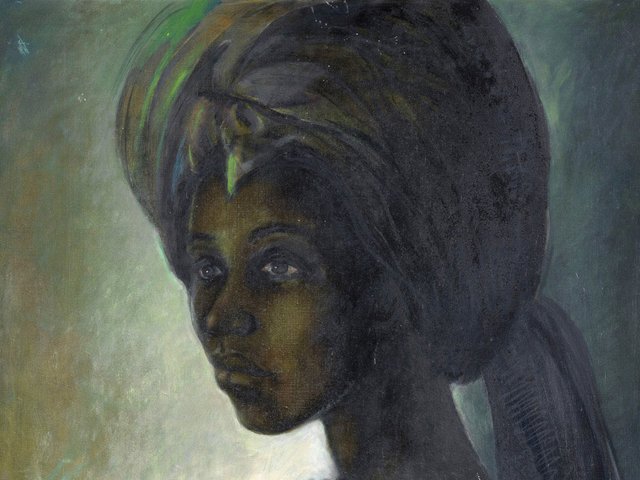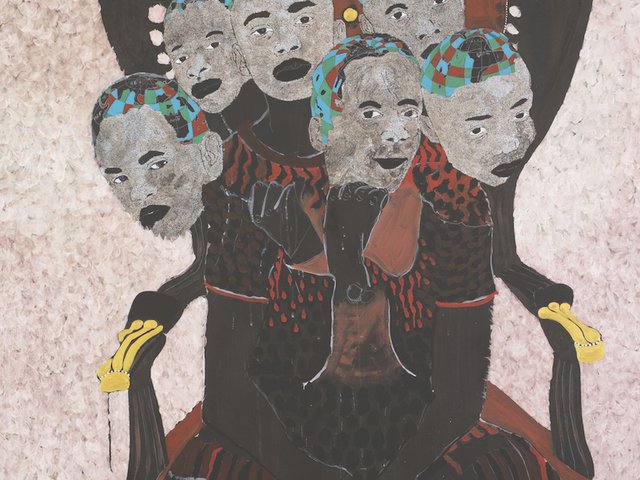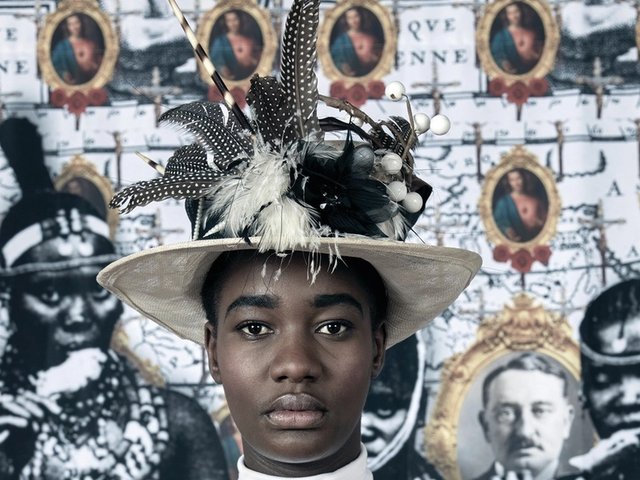Modern and contemporary African art is making its presence felt at the 2018 edition of Art Dubai. Galleries from the continent have increased by 50% since last year, rising from six to nine, and the number of African artists exhibiting has grown by 17%. Although these figures may not represent huge leaps, they do reflect a budding taste among Middle Eastern collectors for Modern and contemporary African art—and not only by artists from North Africa, which has historically identified with the Middle East.
The growth is in line with a focused effort by the fair to raise the profile of art from the African continent. Pablo del Val, the director of exhibitor relations at Art Dubai, says sales in this area were “very, very strong” last year. But does this mean there is finally a flourishing market for Modern and contemporary African art in the Middle East?
Yes, says Toby Clarke, the director of Vigo Gallery in London, which has participated in the fair for the past two years. “There is a growing interest overall in African art and this seems relatively strong in the Middle East,” he says. He notes that while there are far fewer active collectors and museums than in the United States, they are often better funded.
This year, Clarke is lending a painting from the collection of the Sudanese artist Ibrahim El-Salahi, No Shade but His Shade (1968), for That Feverish Leap into the Fierceness of Life, a non-selling exhibition of Modern art from the region that is being staged at Art Dubai with support from the Misk Art Institute. He is also collaborating with the local gallery Lawrie Shabibi on an exhibition by the British-Trinidadian artist Zak Ové at the Dubai dealer’s Alserkal Avenue space.
Rakeb Sile, the co-founder of Addis Fine Art, the first Ethiopian gallery to exhibit at Art Dubai, agrees that there has been a “huge swell” in Middle Eastern interest in sub-Saharan art, and that demand is growing. Being so near the Gulf, the Horn of Africa has long-standing cultural and economic links with the United Arab Emirates, putting Addis Fine Art in a strong position to attract new buyers. (The UAE has invested heavily in Ethiopia in recent years in an effort to strengthen bilateral ties.) Sile estimates that around 20% of her collectors are from the Middle East.

Rakeb Sile and Mesai Haileleul of the pioneering Addis Fine Art are showing in Dubai Addis Fine Art
Modernists from Sudan who were part of the Khartoum School movement in the 1960s and 1970s, particularly El-Salahi, are popular with collectors such as the Lebanese-Palestinian patron Ramzi Dalloul, the Dubai-based financier Walid Kamhawi and Hoor Al Qasimi, the president of the Sharjah Art Foundation. Sile hopes to attract similar interest for artists whose work developed out of the parallel Addis movement in Ethiopia. The painter Gebre Kristos Desta, and later Wosene Worke Kosrof, a student of Desta’s at the School of Fine Arts in Addis Ababa, are those most coveted among Ethiopian collectors.
Addis Fine Art is showing paintings by Wosene at the fair, including the imposing America: The New Alphabet (2017), which fuses Abstract Expressionism (Wosene moved to the US in around 1978) with Amharic script, in a nod to the official working language of Ethiopia. The canvas is priced in the region of £180,000 to £200,000. Colour-saturated images of street scenes by the young, self-taught photographer Girma Berta (£2,500-£5,000, depending on edition and size) are also on offer at the gallery’s stand.
A recent spate of exhibitions at institutions such as the Sharjah Art Foundation has contributed to a growth in demand for contemporary African art. So has a spurt in fairs focused on art from the continent, including the Marrakech edition of the 1-54 Contemporary African Art Fair which launched last month, says Marwan Zakhem, the Lebanese-born owner of Ghana’s Gallery 1957.
However, Zakhem, who is making his debut at Art Dubai, is more cautious about the development of the market for African work in the Middle East. He agrees that the inclusion of more African galleries at Art Dubai signals progress, but notes that the selection still offers a narrow view, as only two—Gallery 1957 and Addis Fine Art—are based in sub-Saharan countries. Sub-Saharan dealers are relatively new to the fair, with Nigeria’s Omenka Gallery being the first to participate in 2014.
“This year’s showing does not reflect the growth of continent-wide representation that we are increasingly witnessing across Europe and the US, but it is hopefully moving in this direction,” Zakhem says. At Art Dubai, his gallery is presenting a solo display of works by Modupeola Fadugba, a Togolese-born artist living in Nigeria. Prices range from $20,000 to $30,000.
Gallery 1957’s first foray into the Middle East came in January, when it took over Lawrie Shabibi’s space on Alserkal Avenue. Although the exhibition, of works by the rising Ghanaian star Serge Attukwei Clottey, was well received (it closed on 3 March), Zakhem says he has not yet noticed a “significant appetite” for sub-Saharan contemporary art among collectors here.
“There is certainly curiosity and interest, but it is only just translating into sales. As with all markets, it will take some time to develop,” he says, noting that between 5% and 10% of his sales are by Middle Eastern collectors, although not all are based in the region.
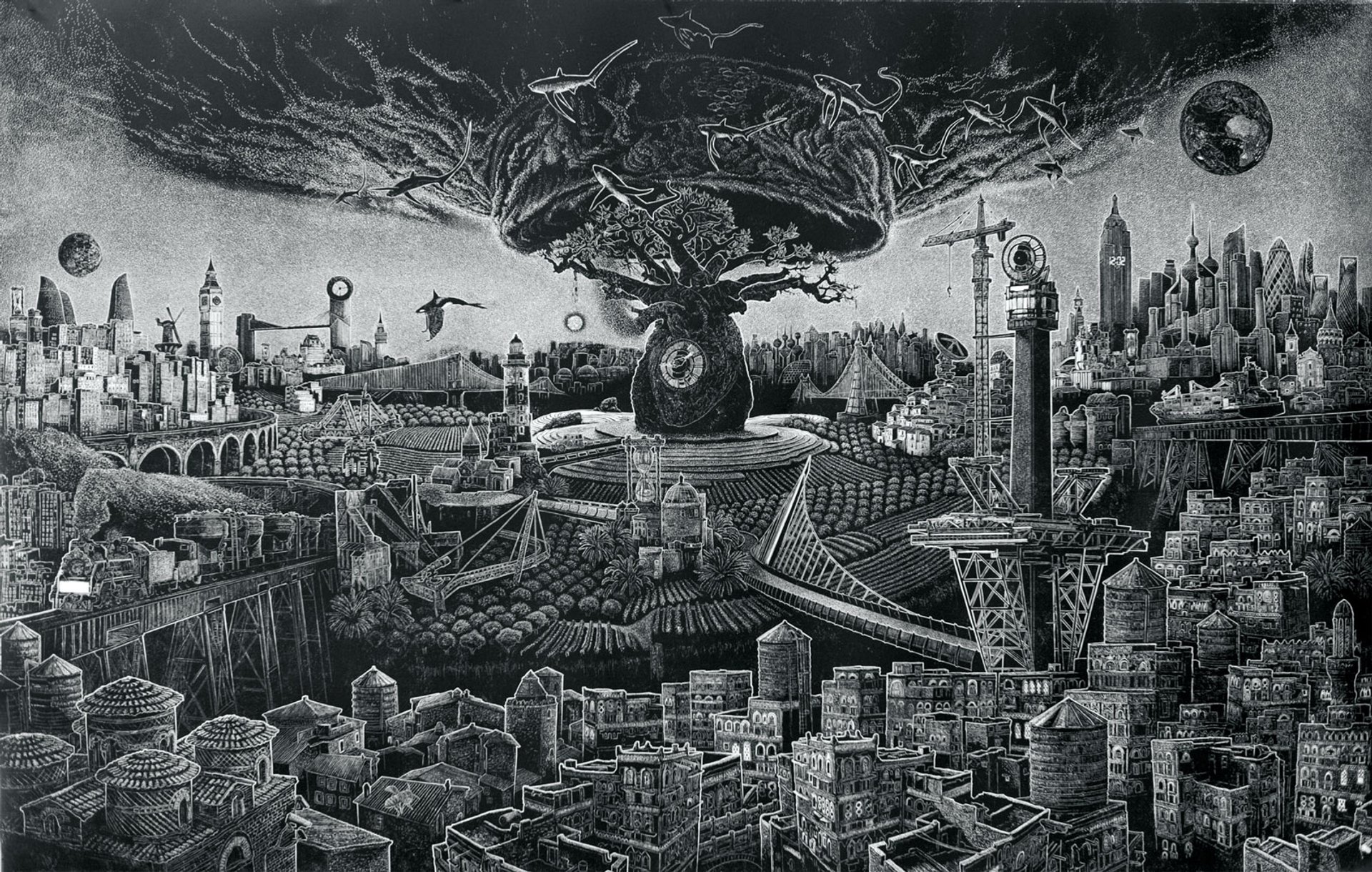
The View After The Questions by Ade Adesina (2018) John Martin Gallery; The Anomie Collective
So, who is acquiring African art in the Middle East? Pablo del Val says buyers’ tastes are increasingly catholic. “Middle Eastern collectors don’t tend to focus exclusively on African art, but regional collecting is becoming more international,” he says. With less of a “white, Western-centric focus” than other fairs, Art Dubai is the perfect crucible of cultures, Del Val adds.
The young French-Iranian artist and curator Sassan Behnam Bakhtiar began buying contemporary Iranian art in 2006, when he was just 22. He comes from a family of avid collectors. His Dubai-based relative Farhad Bakhtiar is lending works for an exhibition split between two venues: Warehouse 46 on Alserkal Avenue and Total Arts at the Courtyard. Timed to coincide with Art Dubai, the show focuses on Iranian and African artists.
Over the past five years, Sassan Behnam Bakhtiar has amassed a personal collection of more than 100 contemporary African works. His first purchase was a photograph by the British-Moroccan Hassan Hajjaj. The collection has since broadened to include other artists such as Abdoulaye Konaté (born in Mali), El Anatsui (Ghana), Aboudia Abdoulaye Diarrassouba (Côte d’Ivoire), Nnenna Okore (Nigeria), Lalla Essaydi (Morocco) and Billie Zangewa (Malawi).
Behnam Bakhtiar says new African art is increasingly on collectors’ agenda: “It is almost always mentioned during conversations about acquisitions, exhibitions and other art projects.” He is planning to open a commercial gallery in Monaco at the end of next summer which will represent several artists from Africa.
Keen to tap in to the burgeoning collector base, galleries from Seattle, Paris, Lisbon, London and New York are among those showing artists from sub-Saharan countries, including Pascale Marthine Tayou from Cameroon (Galleria Continua), the Senegalese Omar Ba (Galerie Templon) and Mozambique’s Ernesto Shikhani (Perve Galeria). Four artists have solo exhibitions, including the German Ghanaian Zohra Opoku and the American Nigerian Victor Ehikhamenor, both of whom are showing in the fair’s new Residents section. This initiative invited 11 artists from around the world to work in the UAE in the lead-up to Art Dubai. The works created during their residencies are being shown at the fair.
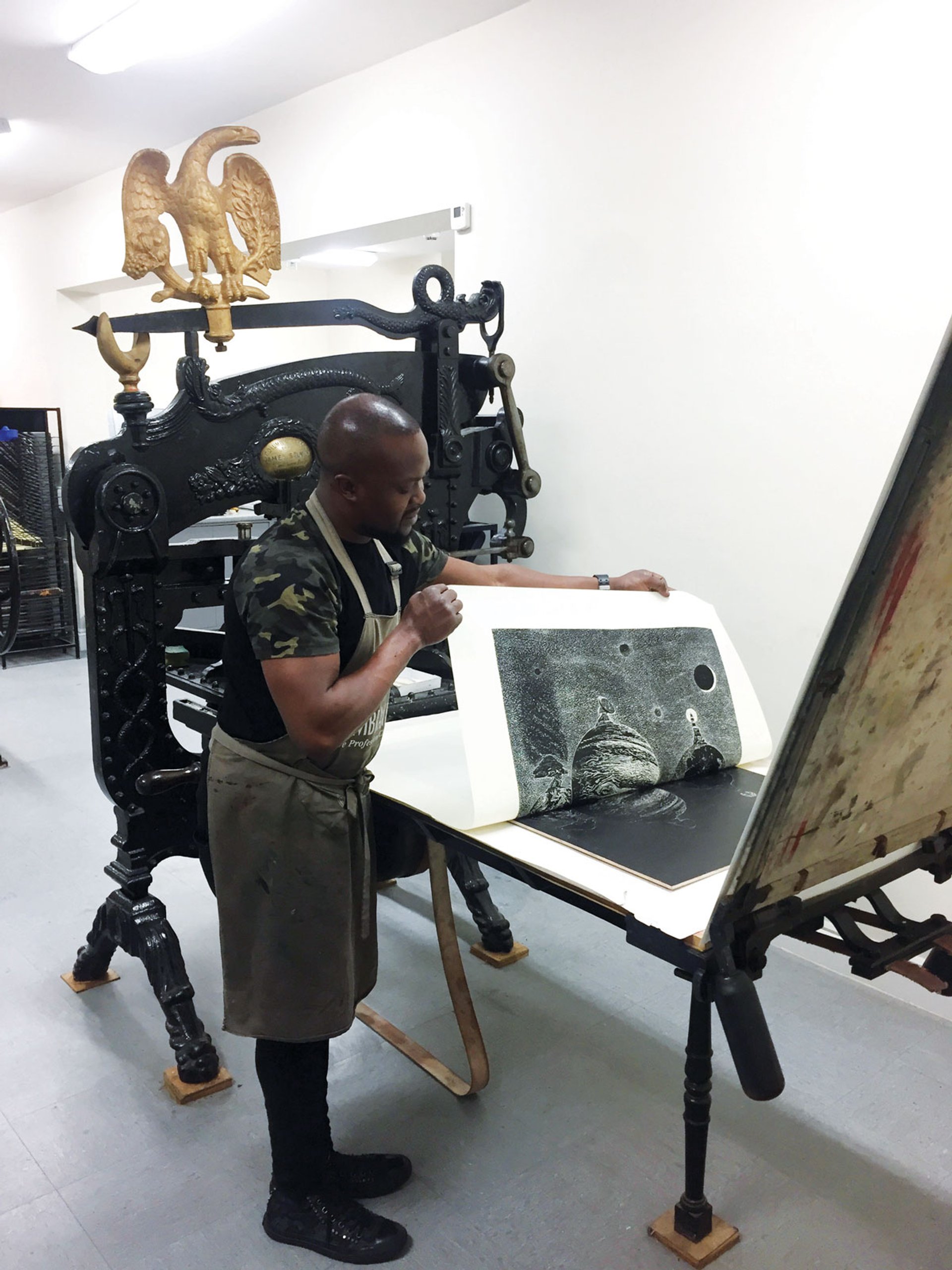
The Nigerian-born Ade Adesina’s linocuts are “on people’s radar” The artist; John Martin Gallery
The London dealer John Martin, who co-founded Art Dubai and was its director from 2007 to 2009, is exhibiting at the fair for the first time. He is showing linocuts by the Nigerian-born, Aberdeen-based Ade Adesina, whom he has represented since last year. A large-scale triptych of a dystopian landscape is priced at $7,500 framed, while single prints are $5,800.
Interest in Adesina’s art has grown since he showed work at the Royal Academy of Arts’ Summer Exhibition in London in 2015. The artist is making his auction debut at Sotheby’s Modern and contemporary African art sale on 28 March in London with a linocut that sold out at the Royal Academy (est £3,000-£5,000). “He is definitely on people’s radar. Big collectors and institutions are looking at his work, particularly one museum in the US,” Martin says.
Martin thinks the development of the regional market for contemporary African art has been more measured than others. “When we started the fair, there was a sense of collectors jumping on the bandwagon of Indian or Middle Eastern art, whereas African art has always been in people’s consciousness; it’s the mother of Modernism,” the dealer says.
For him, the most exciting development is the dissolution of clumsy and problematic old divisions between “African” and “Western” art. “Artists are no longer riffing on clichés,” he says. “There’s a newfound confidence, and that is apparent in the scale and ambition of Ade’s work. If you asked him, he would say he is much more of an environmental artist than an African artist.”
Rakeb Sile argues that the label “African art” is dated, but sees it as probably necessary for this “bridging time”. She adds: “African art might be the last frontier in terms of discovery and value, but, quite soon, we would like our artists to simply be considered mainstream contemporary artists.”
Spotlight on Africa in Dubai
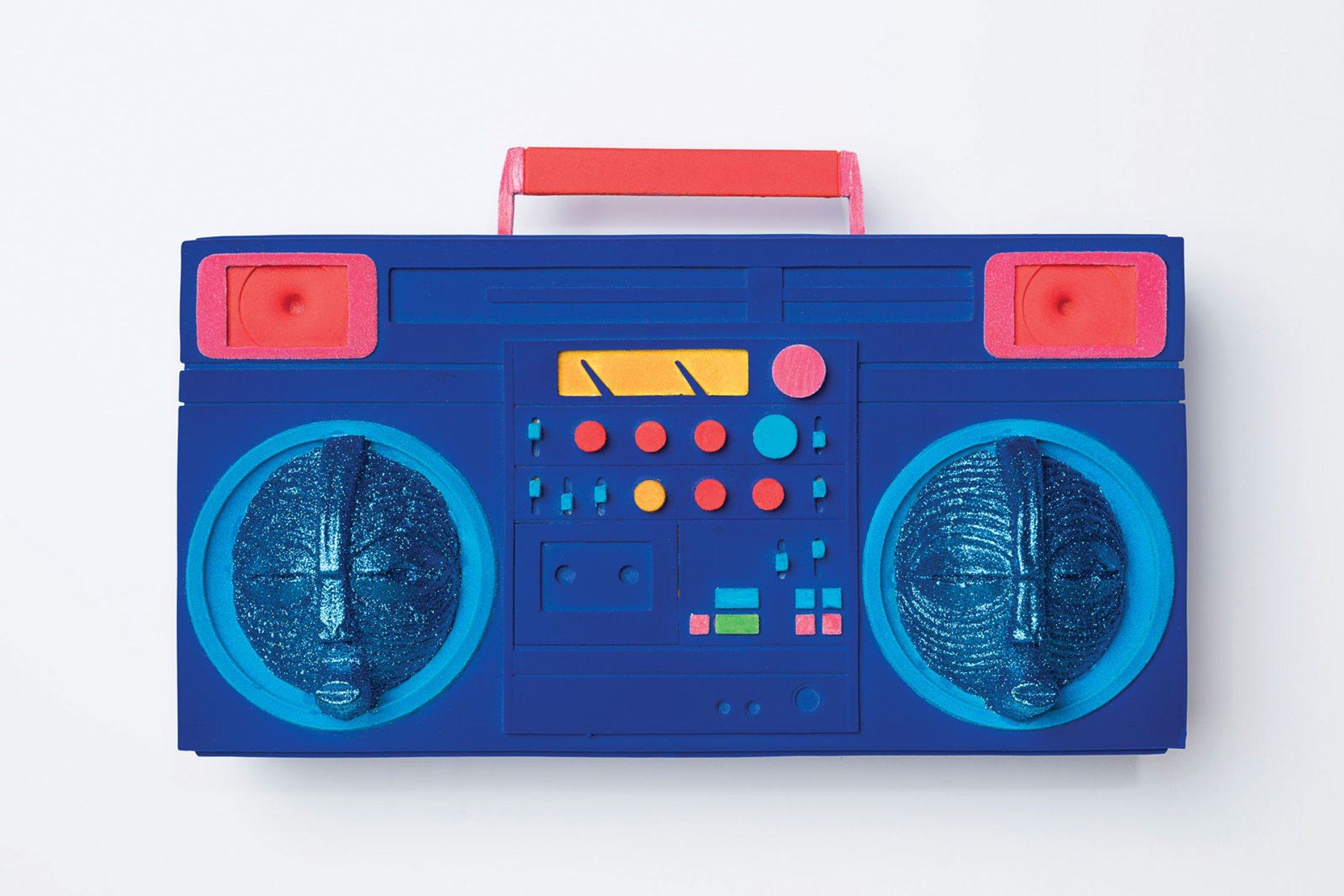
Zak Ové: Resistor Transistors 2 (2017) The artist; Lawrie Shabibi; Will Amlot
Zak Ové: Star Liner
Lawrie Shabibi, Alserkal Avenue 19 March-1 June
Artists from Africa and the diaspora are also making their presence felt in Dubai outside the confines of the fair. Vigo Gallery of London is collaborating with Lawrie Shabibi on a show by Zak Ové. William Lawrie, co-founder of the Dubai gallery, first came across the British-Trinidadian’s work a year ago, at the house of a local collector. “We’ve shown a lot of artists who are from some sort of diaspora,” he says, “90% of them Middle Eastern or North African. Zak’s work fits well, as it is very much about choosing or rediscovering identity.”
For his first exhibition in the Middle East, Ové has created large sculptures of figures in Thunderbirds-style spaceships, boomboxes covered in flocking and glitter (below) and masks fashioned from car parts. There is also a new series of his signature kaleidoscopic “doily” paintings, some using doilies custom-made by Syrian refugees and others vintage European lace. Lawrie says these are popular: previous buyers include the Cleveland Clinic in Abu Dhabi. Prices range from $10,000-$20,000 for the paintings and $9,000-$120,000 for sculptures.
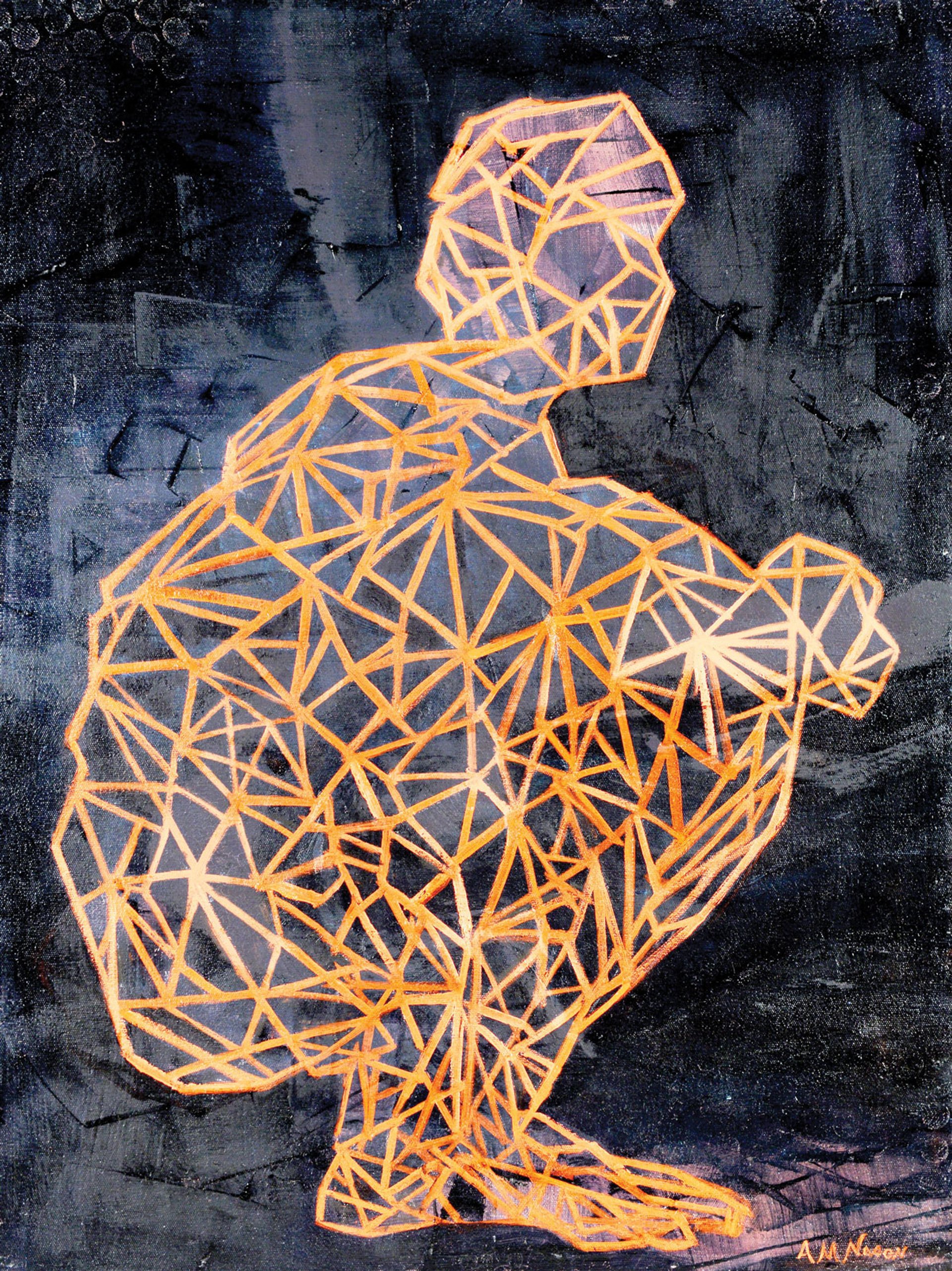
Anne Marie Nelson: Untitled The artist
Iran/Africa
Warehouse 46, Alserkal Avenue Until 24 March
Africa/Africa
Total Arts at the Courtyard, Al Quoz 1 Until 30 April
Iran/Africa brings together around 30 Iranian and 20 African artists, mainly from Egypt, Ethiopia, Morocco, Nigeria, South Africa and Uganda. Africa/Africa focuses on six artists from the continent, including Amartey Golding (Ghana). All works are from the collection of the Dubai-based Iranian entrepreneur Farhad Bakhtiar. “Dialogue does not necessarily depend on similarities but on contrasts, so in these exhibitions we hope to show both,” says curator Fereydoun Ave.
The show is split in two, he explains, because of space restrictions and a non-selling policy on pop-up shows—the exhibits at the gallery in Al Quoz are for sale. Prices range from $300 to $300,000.
Ave believes contemporary African art is popular in Dubai partly because the emirate is at many crossroads. “Mr Bakhtiar is an Iranian businessman who lives in Dubai and works with African businesses, and therefore is exposed to the flourishing art market from this region—and, from his trips to Africa, to the African art scene,” he says.



